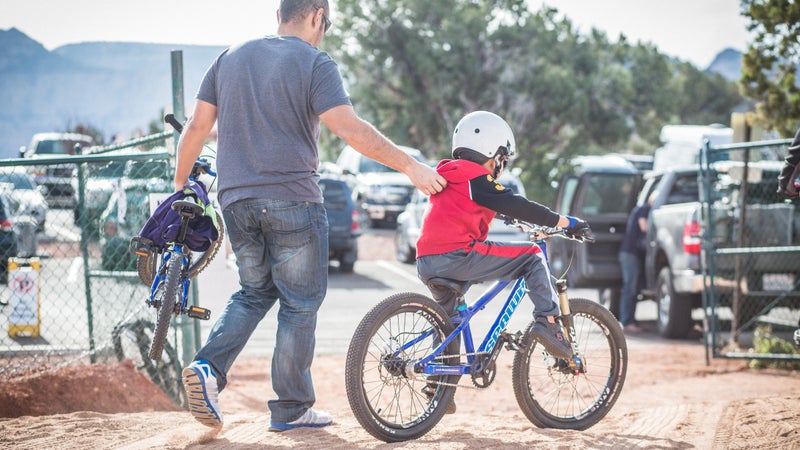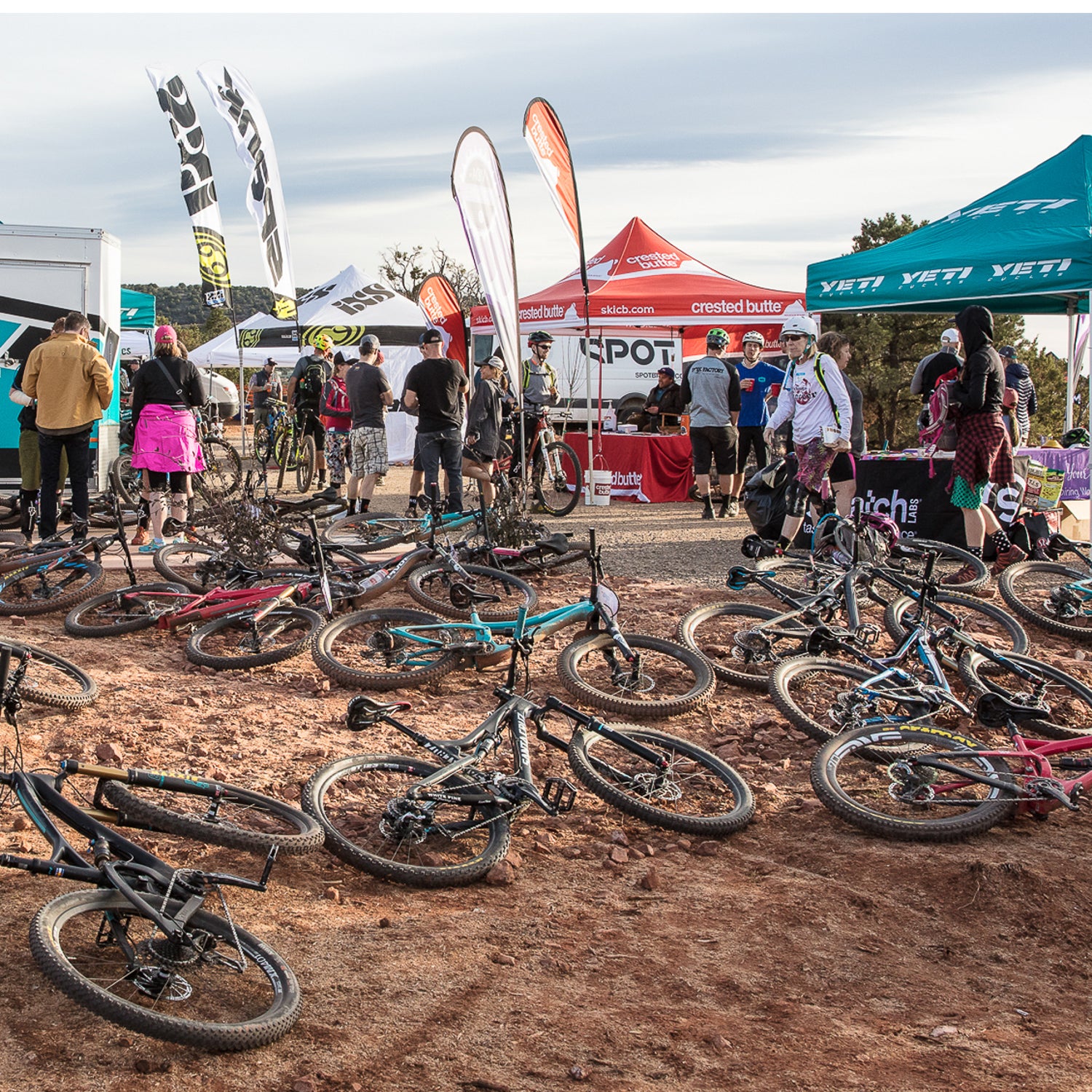Last weekend, thousands of cyclists descended on northern Arizona for the third annual Sedona Mountain Bike Festival. By every measure, the event was a success: the crowds dwarfed those at the previous editions; the venue, a newly built city park with flow trails, a pump track, and an outdoor amphitheater, couldn’t have been better; and lots of money was raised by the to continue the city’s expansion of mountain bike trails. But what struck me the most at the three-day event was how little more than a vision and some concerted work can create so much goodwill and a positive experience for cyclists.
Full disclosure: The owners of , Mike Raney and Jason First, are my friends and the event’s organizers. They didn’t ask me to write anything about the festival, but just like amped-up kids trying to roust their parents on Christmas morning, they wanted me to come to see what they’ve built. I generally hate festivals and the crowds, busy trails, and ruckus they bring. (Yes, I’m a curmudgeon.) So I had been avoiding the for years. But my travel schedule aligned and Raney was persistent, so there was no begging off this year.
Good thing.
Four years ago, the Sedona Mountain Bike Festival was only an idea. Raney and First had just opened their bike shop a year earlier, and though it was going great, they were looking for opportunities for expansion and community engagement. Another Sedona local had run a mountain bike festival, but it didn’t really go anywhere, so Raney approached him and asked to take over.
During that first year, in 2015, some 750 riders attended, along with 20 or so vendors and several beer trucks. The event was held in a parking lot downtown that was too small from the start. “We were just too big,” says Raney. “And still, when I saw how that first year went, I knew it could be better.”
The festival shifted to a new location the following year, and attendance skyrocketed to 2,200. This year’s event marked the opening of the . This place feels almost tailor-made for the mountain bike festival, with a pump track and flow trails on a south-facing hill with views over Airport Mesa, the far-off profile of Submarine Rock, and all the other fiery red sandstone outcrops that define the town. The final counts aren’t tallied yet, but it’s looking like 3,000 or so people came out this year. Based on Sedona Chamber of Commerce estimates, that will add up to more than $2.8 million in revenue for the city. Meanwhile, the SRRTF raised more than $5,000 for trail work, which, according to Jen Burns, the group’s president, will support a trail crew for three weeks. “Without the trails, there would be no festival,” says Burns. “At the same time, the festival brings overnight traffic that is both spending money and has a low impact. It’s an important contribution to the city.”

I review a lot of bikes and gear, and though much of it improves our lives as cyclists, that improvement is a tough thing to quantify. On the other hand, millions of dollars invested in a small city is an easy thing to grasp. And it’s more than just money—it’s the whole vibe. Some 80 vendors attended this year’s event to demo their bikes and wares to festivalgoers. A scrum of food trucks pimped tacos, killer pizza, and espresso. Bands played to a lively crowd on the open-air stage. A host of local breweries and a winery slung drinks. Mountain bikers cruised in and out, testing bikes on the network of trails that hooked straight into the venue (as well as places too far to pedal to, efficiently serviced by ). It felt like the festival was making people happier than any new bike, piece of gear, or single ride ever could.
“It’s rewarding to see customers come out to try new bikes and trails,” says Greg Decori, the Trek representative who has attended the festival on behalf of the brand since its inception. “But most of all, I simply like the community of it all.”
That’s how I felt every time I walked through the gates at the festival this year. Riders edged their way through the tent city, being careful not to plow anyone down. Vendors smiled and chatted with passersby. On the trails, which were not that crowded, everyone I encountered was polite and ceded the right of way. People seemed happy to be mountain bikers. It made me realize that if you’re going to build something in this industry, it’s great to turn a profit, but even better if it also adds to the collective cycling good.
“I came to biking when I was 13 or 14, and it made a really big difference for me. Most of the positive things in my life have come from it,” Raney told me. “So I have always wanted to help create something that makes cycling accessible and normal for everyone. I want something around me that has been powerful like that.”


